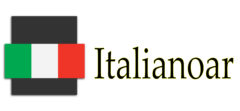Regional Transfer Offices (RTOs) are important to maintaining purchase and effectiveness in the sphere of street transport. Nevertheless, the entire potential of RTO assets usually remains untapped. In this short article, we discover the significance of RTO resources and search into how their optimization may lead to increased processes, increased solutions, and a more structured path transfer ecosystem.
Modernizing Infrastructure and Techniques:
To open the potential of RTO sources, it is essential to invest in modern infrastructure and systems. By adopting sophisticated technologies, RTOs may automate procedures, decrease paperwork, and reduce administrative burdens. Implementation of user-friendly on the web platforms for solutions such as for example vehicle enrollment, certificate renewals, and price obligations may considerably enhance convenience for equally RTO personnel and path users.
Empowering RTO Workers:
RTO sources encompass not only technical developments but additionally the skills and familiarity with the workers working within these offices. By providing extensive education programs, workshops, and skilled progress options, RTOs may inspire their staff members to provide outstanding services. Well-trained personnel can handle complex queries, provide exact guidance, and guarantee effective managing of paperwork, fostering a culture of superiority within RTOs.

Leveraging Knowledge for Insights and Changes:
RTOs acquire huge levels of information related to cars, licenses, street incidents, and more. By harnessing the energy of information analytics, RTOs may obtain valuable ideas in to traffic designs, license compliance charges, and vehicle performance. These insights can drive evidence-based decision-making, resulting in the implementation of targeted road protection measures, improved resource allocation, and increased over all efficiency of road transfer systems.
Enhancing Customer Knowledge:
RTO resources should really be focused on providing exceptional customer experiences to road users. Employing user-centric strategies, such as for example on the web session methods, faster waiting situations, and clear conversation programs, can considerably increase client satisfaction. Also, hands-on transmission regarding any improvements in regulations, paperwork demands, or support techniques can help consumers understand the RTO procedures efficiently and RTO training resources.
Strengthening Interagency Relationship:
To appreciate the full potential of RTO sources, venture with other agencies and stakeholders is vital. Seamless integration with police agencies, traffic administration authorities, and car inspection stores may lead to improved control, improved enforcement of regulations, and effective discussing of information. That venture may result in better path security methods, paid down traffic obstruction, and a far more holistic method of managing the transport ecosystem.
Conclusion:
Optimizing RTO sources is important in driving brilliance and effectiveness within the road transfer sector. By modernizing infrastructure, empowering workers, leveraging data ideas, enhancing client knowledge, and fostering interagency venture, RTOs may open their full potential. This will not just lead to streamlined operations and improved companies but in addition donate to safer streets, enhanced user satisfaction, and a far more sustainable and efficient path transport environment for all.
